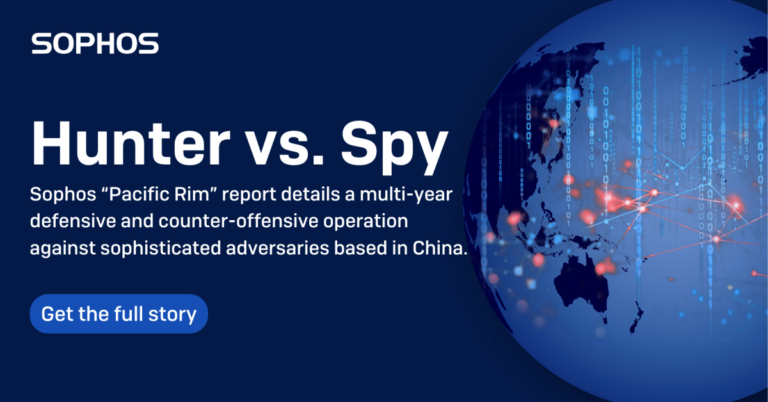Sophos, a global cybersecurity firm, has unveiled a comprehensive report, “Pacific Rim,” detailing a five-year-long campaign of sophisticated cyberattacks originating from China. These attacks, carried out by multiple state-sponsored groups, targeted critical infrastructure, government entities, and businesses across South and Southeast Asia.
“The reality is that edge devices have become highly attractive targets for Chinese nation-state groups like Volt Typhoon and others as they look to build operational relay boxes (ORBs) to obfuscate and support their activity. This includes directly targeting an organization for espionage, or indirectly leveraging any weak points for onward attacks – essentially becoming collateral damage. Even organizations that are not targets are getting hit. Network devices designed for businesses are natural targets for these purposes – they are powerful, always on, and have constant connectivity,” said Ross McKerchar, CISO at Sophos.
He added that: “When a group seeking to build a global network of ORBs targeted some of our devices, we responded by applying the same detection and response techniques we use to defend our corporate endpoints and network devices. This allowed us to burn multiple operations and tap into a valuable stream of threat intelligence that we applied to protect our customers from both future widespread attacks and highly targeted operations.”
Key Findings from the Report:
- Persistent and Evolving Threats: The Chinese adversaries employed a variety of techniques, including novel exploits, custom malware, and advanced hacking tools, to compromise vulnerable devices and systems.
- Targeting Critical Infrastructure: The attacks specifically targeted sectors like nuclear energy, transportation, and government agencies, highlighting the potential for significant disruption and data breaches.
- Sophisticated Tactics: The attackers demonstrated a high level of technical expertise, utilizing advanced techniques like zero-day exploits and supply chain attacks.
- Global Impact: The attacks had far-reaching consequences, impacting organizations worldwide and underscoring the global nature of cyber threats.
Sophos’ Counter-Offensive:
Sophos’ X-Ops team actively countered these attacks, employing advanced defensive and offensive techniques. The company identified and neutralized multiple threat actors, disrupted their operations, and shared critical intelligence with the broader cybersecurity community.
Recommendations for Organizations:
To mitigate the risks posed by these cyber threats, Sophos recommends the following:
- Prioritize Patching: Promptly apply security patches to all internet-facing devices to address vulnerabilities.
- Minimize Internet Exposure: Limit the number of internet-facing devices and services to reduce the attack surface.
- Implement Strong Security Practices: Adopt robust security measures, including strong passwords, multi-factor authentication, and regular security awareness training.
- Stay Informed: Stay updated on the latest cybersecurity threats and vulnerabilities.
- Collaborate with Cybersecurity Experts: Partner with experienced security professionals to enhance your organization’s defenses.
Conclusion:
The “Pacific Rim” report underscores the urgent need for organizations to strengthen their cybersecurity defenses against persistent and sophisticated cyber threats. By understanding these adversaries’ tactics, techniques, and procedures, organizations can proactively protect their critical assets and mitigate the potential impact of cyberattacks.




